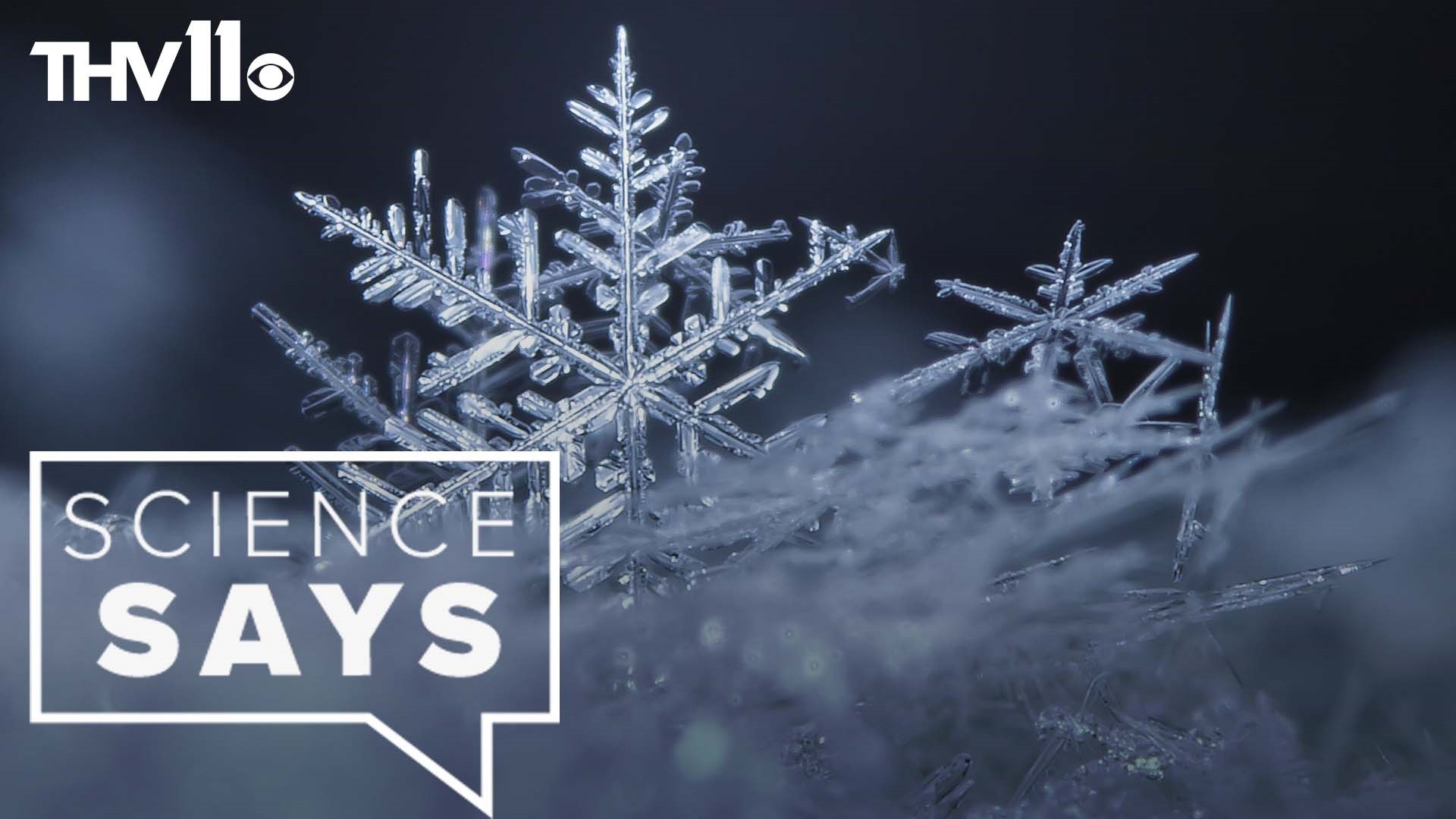LITTLE ROCK, Ark. — There's nothing quite like seeing the first snowflakes of the season. Those feathery, ice crystals slowly falling from the clouds and blanketing the ground.
You've probably heard the phrase "no two snowflakes are alike,” well there's actually some truth to that.
Most of us learn at an early age that snowflakes form when water droplets merge with dust particles and freeze.
When you think of snowflakes, you probably imagine them as the typical six-sided shape looking like branches.
Here's your word of the day — that shape is known as dendrite — which means "tree-like.”
There are as many as 35 different snowflake shapes and combinations, such as plates, columns, needles, or prisms.
A snowflake's shape can depend on a number of factors, such as temperature and humidity level.
For example, when temperatures are around the freezing mark and there's more moisture in the air, they'll form into more complex patterns like a six-sided shape or a hexagonal plate.
At this temperature, they can become bigger in size as they fall since they'll stick to each other easier. That produces heavy, wet snow, you know that perfect kind for making snowballs.
As it gets colder though snowflakes will tend to have simpler shapes, forming more of a prism or hollow column type shape.
If the air is too cold or dry, the flakes won't stick to each other as easily, so they tend to be smaller. That's when we see that dry, powdery snow that's much easier to shovel.
Beyond that, the reason why it's pretty much impossible for the shape of any two snowflakes to be alike is that each one is made up of different molecules.
Slight variations give them their unique qualities by the time they reach the ground because each snowflake is impacted differently as it falls through the atmosphere.
Whatever shape or form snow comes in, it's still pretty to look at as it falls.

